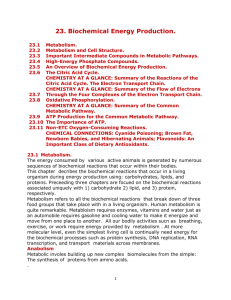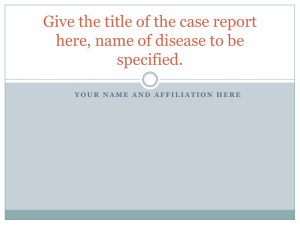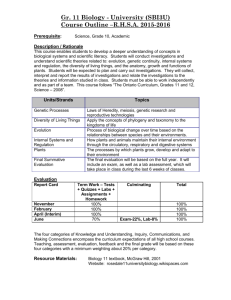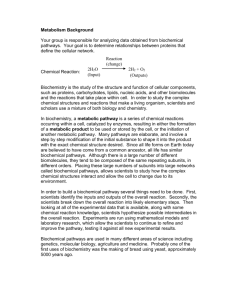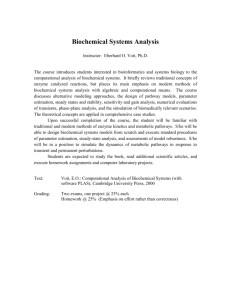Case Study Template
advertisement
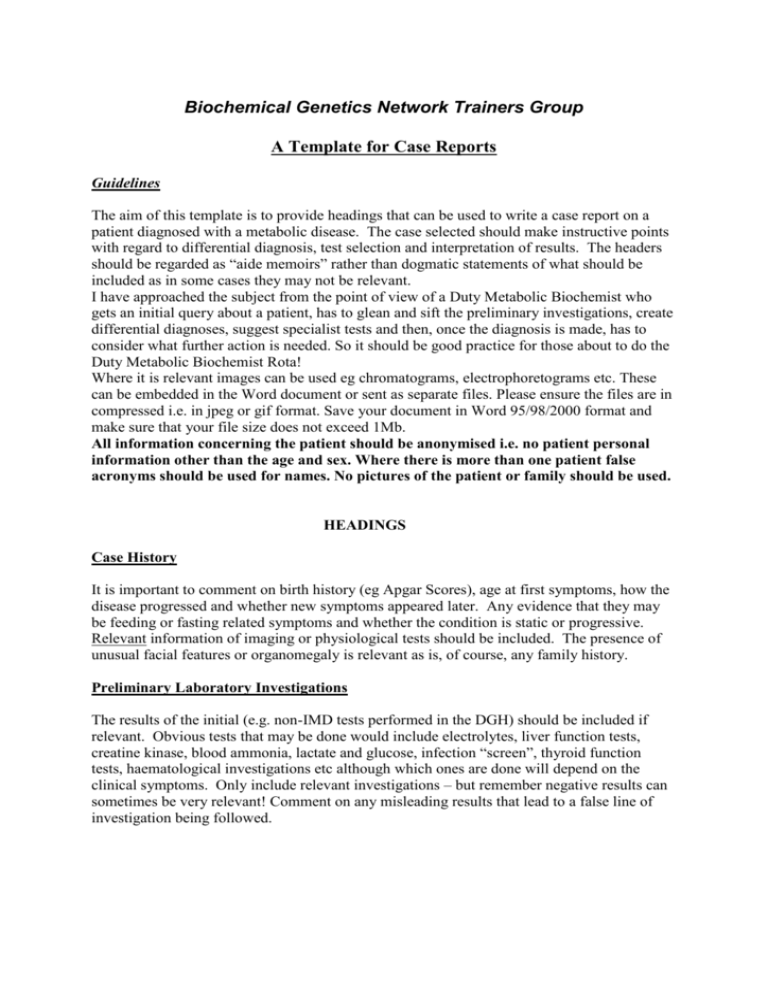
Biochemical Genetics Network Trainers Group A Template for Case Reports Guidelines The aim of this template is to provide headings that can be used to write a case report on a patient diagnosed with a metabolic disease. The case selected should make instructive points with regard to differential diagnosis, test selection and interpretation of results. The headers should be regarded as “aide memoirs” rather than dogmatic statements of what should be included as in some cases they may not be relevant. I have approached the subject from the point of view of a Duty Metabolic Biochemist who gets an initial query about a patient, has to glean and sift the preliminary investigations, create differential diagnoses, suggest specialist tests and then, once the diagnosis is made, has to consider what further action is needed. So it should be good practice for those about to do the Duty Metabolic Biochemist Rota! Where it is relevant images can be used eg chromatograms, electrophoretograms etc. These can be embedded in the Word document or sent as separate files. Please ensure the files are in compressed i.e. in jpeg or gif format. Save your document in Word 95/98/2000 format and make sure that your file size does not exceed 1Mb. All information concerning the patient should be anonymised i.e. no patient personal information other than the age and sex. Where there is more than one patient false acronyms should be used for names. No pictures of the patient or family should be used. HEADINGS Case History It is important to comment on birth history (eg Apgar Scores), age at first symptoms, how the disease progressed and whether new symptoms appeared later. Any evidence that they may be feeding or fasting related symptoms and whether the condition is static or progressive. Relevant information of imaging or physiological tests should be included. The presence of unusual facial features or organomegaly is relevant as is, of course, any family history. Preliminary Laboratory Investigations The results of the initial (e.g. non-IMD tests performed in the DGH) should be included if relevant. Obvious tests that may be done would include electrolytes, liver function tests, creatine kinase, blood ammonia, lactate and glucose, infection “screen”, thyroid function tests, haematological investigations etc although which ones are done will depend on the clinical symptoms. Only include relevant investigations – but remember negative results can sometimes be very relevant! Comment on any misleading results that lead to a false line of investigation being followed. Differential Diagnosis Taking into account the case history and the results of the preliminary tests provide a list of possible diagnoses (in order of probability if you wish!) and comment on why they are included. Recommended Further Investigations List the metabolic tests that are recommended on the patient. Results of Further Testing Give the results of those tests, an interpretation and reveal the final diagnosis!. Overview of Disease Give a short overview of the clinical features of the disease with background biochemistry and molecular biology as well as the diagnostic tests. Briefly describe current treatment options and if biochemical monitoring required. Compare your patient with the classical form of the disease and describe in what way if any it differs (if at all!). Further Testing If necessary give details of any further testing that would be required to more precisely delineate or to definitely confirm the disease. Treatment & Monitoring Describe what treatment was attempted in this case, how successful (or not) it appeared to be and the results biochemical monitoring of treatment. How is the patient now? Genetics Give a family history and, if any other family members have been tested. Describe the mode of inheritance. If relevant give details of the antenatal diagnostic options that are available in first or second trimester. Give the results of any molecular biology tests that have been done on the patient and their relevance to the family. Summary State one or two bullet points what this case teaches us. References Provide a few references, preferably giving overviews of the clinical and biochemical aspects of the disease. A reference to a web-based biochemical pathway would be useful but bewaresome can have so much detail that you can’t see the wood for the trees! Patient Confidentiality State whether the patient/parents/guardian have given permission for this anonymised case report to appear on the Metbionet Website. If permission has not been obtained please state the reason eg refusal, uncontactable etc. Where do I send it? When you have completed the case report send it to me in Microsoft Word format (save it to a generic Windows 95/98/2000 format) at the email address below. George Gray Midlands Cluster Trainer Clinical Chemistry Birmingham Childrens Hospital 0121 3339939 george.gray@bch.nhs.uk

